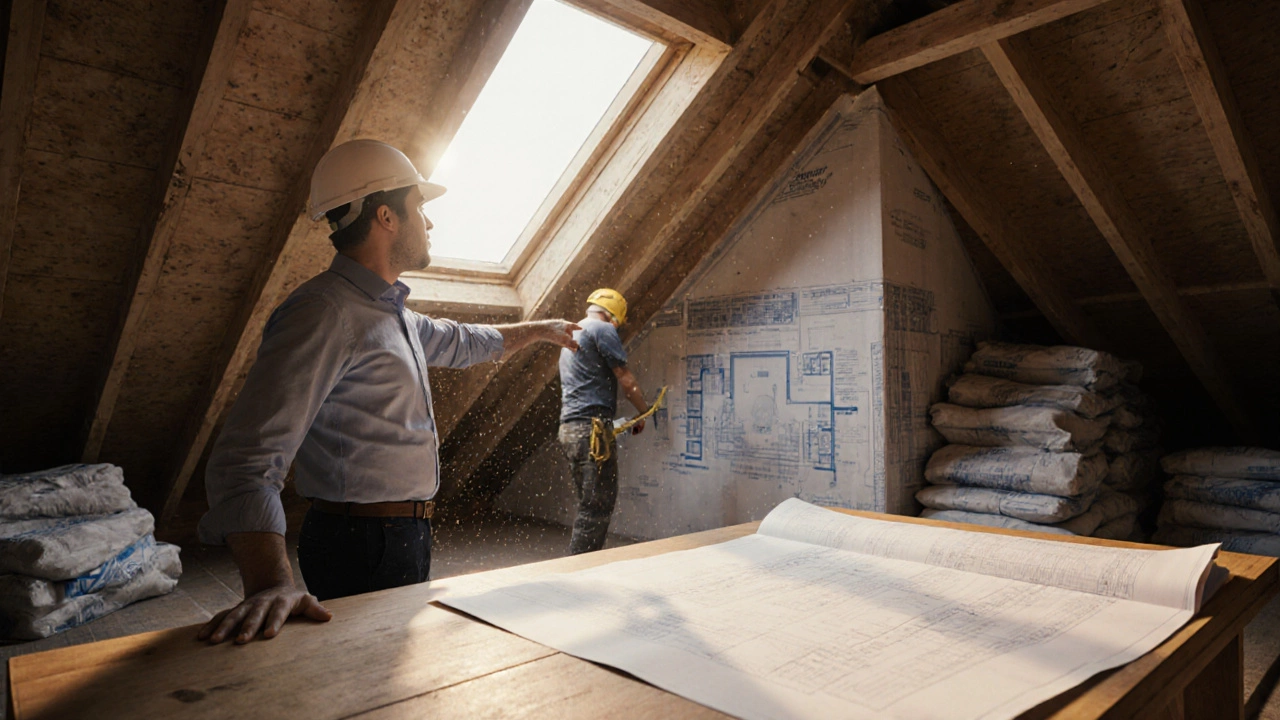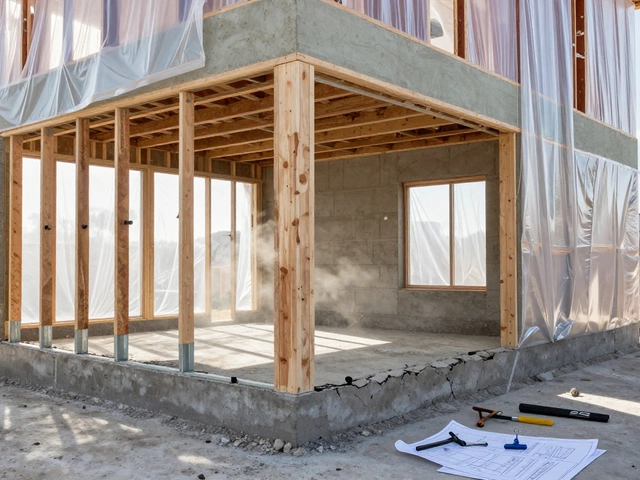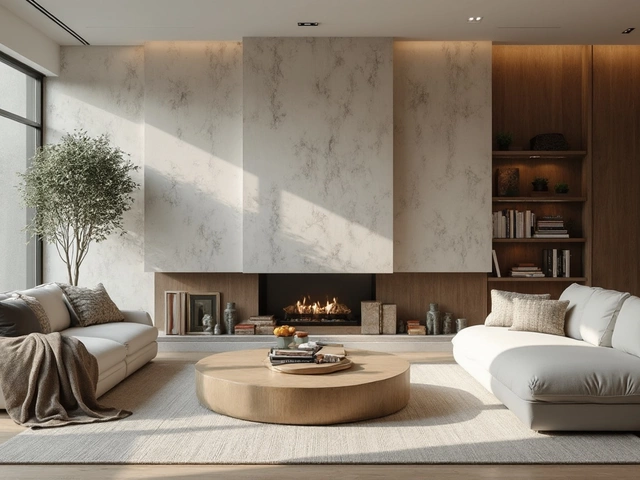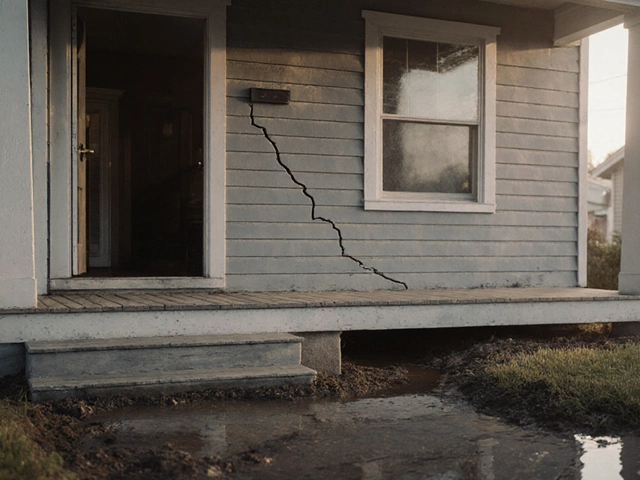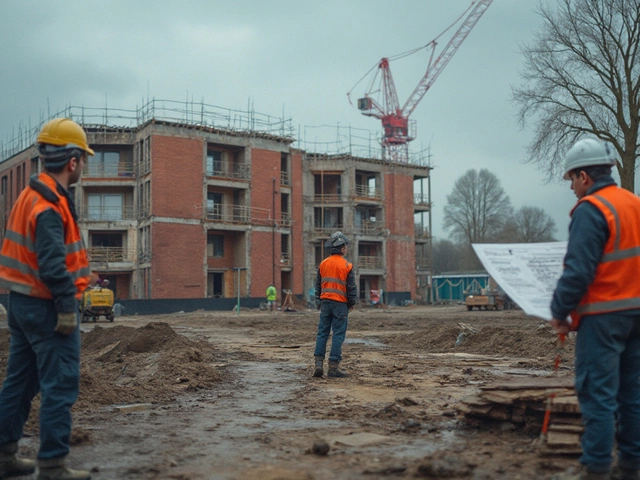Loft Conversion Cost Calculator
Estimate Your Project Costs
Based on UK market data from 2025 (source: article content)
Enter your base cost to see estimates
When you hear Loft conversion is the process of turning unused attic space into a livable room, the first thing that comes to mind is usually extra square footage and a boost in property value. But every upgrade carries a flip side, and loft conversion disadvantages can quickly turn excitement into a budgeting nightmare or a compliance headache. Below we break down the most common pitfalls, how they affect you, and what you can do to keep surprises to a minimum.
1. High Up‑Front Costs and Budget Overruns
Unlike a simple paint job, a loft conversion touches the roof, structure, and utilities. Typical price ranges in 2025 sit between $45,000 and $85,000 in the UK, but hidden expenses-such as reinforcing joists, upgrading insulation, or meeting fire‑safety standards-can add another 10‑25%.
- Structural reinforcement: Adding load‑bearing walls or steel beams often requires a structural engineer’s report, which can cost $1,000‑$2,500.
- Electrical and plumbing upgrades: Extending circuits or installing a bathroom may require a licensed electrician and plumber, each charging hourly rates of $80‑$120.
- Finishing touches: High‑quality plasterboard, flooring, and lighting can push the final tally beyond the original quote.
To keep costs in check, get multiple quotes, set a firm contingency fund (around 15% of the estimated total), and confirm exactly what each contractor includes in their price.
2. Planning Permission & Building Regulations Hurdles
Not every attic can be legally converted. Local authorities enforce strict rules on roof pitch, headroom, fire escapes, and ventilation. Failure to obtain the right approvals can result in hefty fines or, worse, a forced reversal of the work.
Key regulatory checkpoints include:
- Permitted development rights: In England, you may convert without full planning permission if you stay within volume‑permitted limits, but this varies by council.
- Building regulations: Structural integrity, fire safety (including a second means of escape), and energy performance must be certified.
- Neighbour objections: If your conversion alters the external appearance of the roof, neighbours can lodge a complaint, potentially stalling the project.
Engage a qualified architect early on; they can produce the necessary drawings and help you navigate the approval process efficiently.
3. Structural and Load‑Bearing Challenges
Attic spaces were originally designed for storage, not for permanent occupancy. Adding a bedroom or bathroom means extra weight from furniture, people, and fixtures.
Common structural issues include:
- Weak joists: Timber joists may need sistering or replacement with steel beams.
- Roof framing: A steep roof pitch can limit usable space and increase the need for cutting into rafters.
- Floor vibration: Poorly designed floors can feel “bouncy,” especially when holding heavy furniture.
Hiring a structural engineer for a load‑assessment report helps you avoid expensive retrofits later.
4. Energy Efficiency and Thermal Comfort Issues
Lofts are notoriously hard to keep warm. Even with modern insulation, temperature fluctuations are common, leading to higher heating bills.
Effective solutions:
- Install high‑R‑value insulation (R‑40 for roofs, R‑30 for walls).
- Use airtight windows and consider double‑glazed skylights.
- Integrate under‑floor heating or low‑energy radiators to maintain even warmth.
Neglecting these measures can reduce the overall energy‑performance rating of your home, affecting both comfort and future resale value.
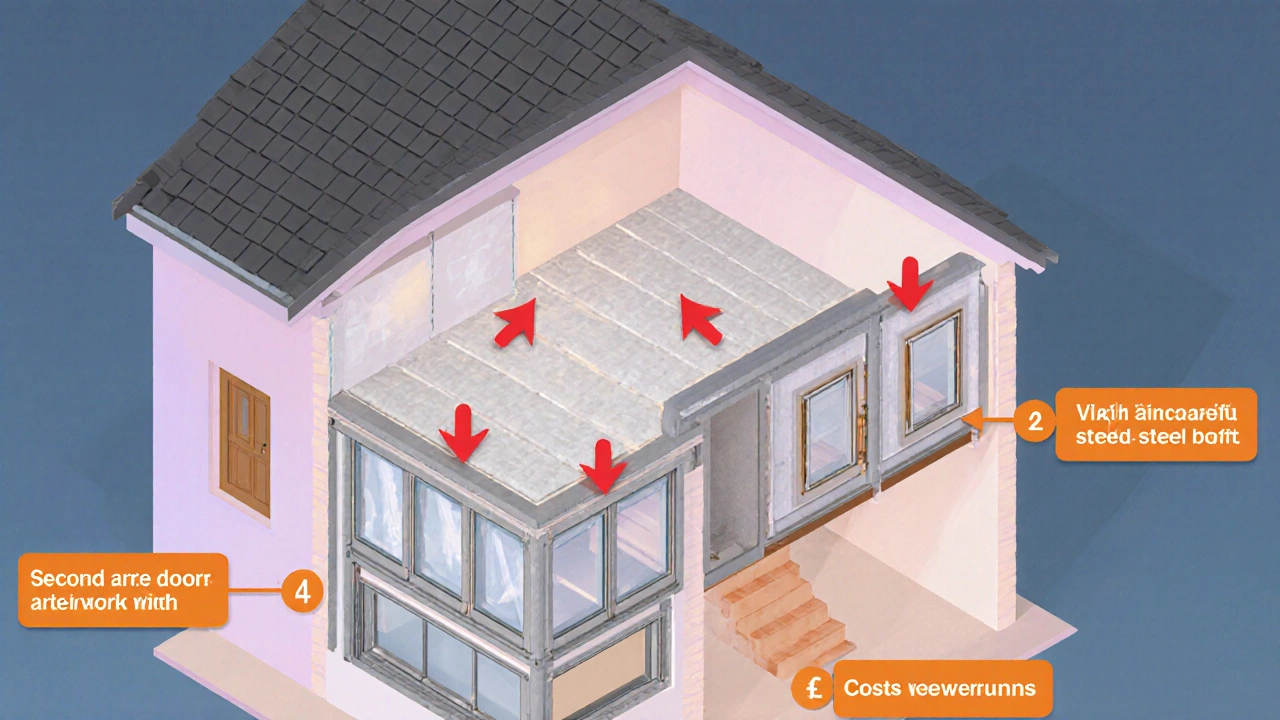
5. Fire Safety and Escape Route Complications
Fire codes require a second means of escape from any habitable loft space. Simply adding a hatch isn’t enough; you need a fire‑rated door, protected stairwell, and compatible smoke alarms.
Risks of non‑compliance include:
- Insurance premium hikes: Insurers may refuse coverage or charge higher rates.
- Legal liability: In the event of a fire, an unsafe loft can lead to severe legal repercussions.
Working with a fire‑safety consultant ensures that your design meets the latest standards without sacrificing aesthetics.
6. Reduced Headroom and Usability Constraints
Even after a successful conversion, many lofts suffer from limited headroom, especially near the sloping roof edges. This can restrict furniture placement and affect the room’s functionality.
Typical headroom solutions:
- Raise the roof by adding dormer windows-adds cost but dramatically improves space.
- Use low‑profile furniture and built‑in storage to make the most of the available volume.
Remember, a loft with less than 2.2 meters of clear height may feel cramped and could deter potential buyers.
7. Impact on Existing Services and Future Renovations
Converting the loft can interfere with existing wiring, plumbing, and ventilation shafts that run through the roof cavity. Adjusting these services often requires specialist tradespeople.
Potential complications include:
- Relocating hot water tanks or boiler pipework.
- Re‑routing HVAC ducts, which can increase the overall construction timeline.
Plan the conversion alongside any scheduled upgrades to your heating or electrical systems to avoid duplicated work.
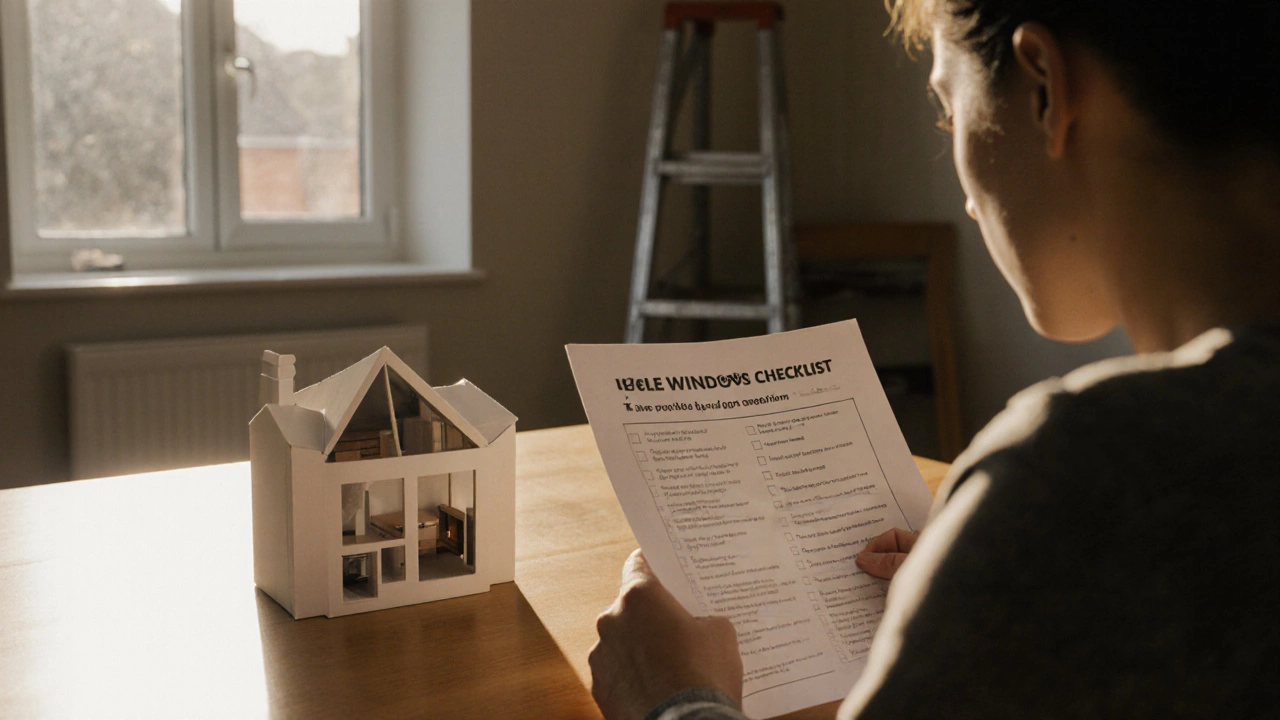
Disadvantages Summary Table
| Disadvantage | Typical Impact | Mitigation Strategy |
|---|---|---|
| High Up‑Front Costs | Budget overruns, project delays | Get multiple quotes, set a 15% contingency fund |
| Planning & Regulations | Fines, possible reversal of work | Engage an architect early, secure all permits |
| Structural Load Issues | Floor vibration, safety concerns | Commission a structural engineer report |
| Energy Efficiency | Higher heating bills, lower EPC rating | Install high‑R insulation, double‑glazed windows |
| Fire Safety | Increased insurance costs, legal risk | Install fire‑rated doors, second escape route |
| Limited Headroom | Reduced usability, lower resale appeal | Dormer extensions or low‑profile furnishings |
| Service Interference | Complex rewiring/plumbing, extra labor | Coordinate with planned system upgrades |
Quick Checklist Before You Commit
- Confirm that your roof pitch and headroom meet local regulations.
- Obtain a structural engineer’s assessment for load‑bearing capacity.
- Secure planning permission and full building‑regulation approval.
- Budget an extra 10‑20% for unexpected structural or compliance work.
- Plan for enhanced insulation, ventilation, and fire‑safety measures.
Frequently Asked Questions
Do I need planning permission for every loft conversion?
Not always. If the conversion stays within permitted‑development limits-usually a volume increase of up to 40 cubic metres-you can proceed without full planning permission, but you still need building‑regulation approval.
How much extra insulation should I add?
Aim for an R‑value of at least 40 for the roof and 30 for any side walls. Materials like mineral wool or spray‑foam work well in tight attic spaces.
What’s the safest way to add a stairwell?
Install a prefabricated stair kit that meets fire‑rating standards, and ensure the landing is at least 900mm wide. A fire‑rated door at the base of the stairs is also required.
Can I convert my loft without affecting the roof’s exterior?
A “pop‑top” conversion adds dormer windows that alter the roofline, which may require neighbour consent. Alternatively, a “minimalist” conversion keeps the original roof shape but sacrifices headroom.
Will a loft conversion lower my home insurance premiums?
Usually not. In fact, if fire safety isn’t fully addressed, insurers may raise premiums. Properly complying with fire‑safety codes can keep your rates steady.
Loft conversions can be a fantastic way to unlock dormant space, but ignoring the drawbacks can turn a dream project into a costly nightmare. By understanding the financial, structural, and legal challenges up front-and planning mitigations-you’ll avoid the common pitfalls and enjoy a functional, safe, and energy‑efficient new room for years to come.
